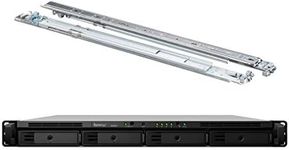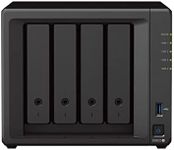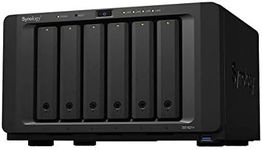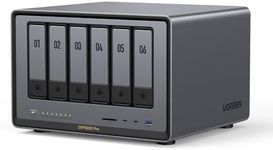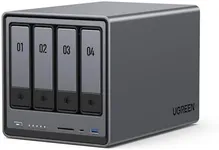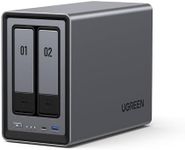Buying Guide for the Best Synology For Plex
When choosing a Synology NAS (Network Attached Storage) for running Plex, it's important to consider several key specifications to ensure you get the best performance for your media streaming needs. Plex is a powerful media server that can stream your media to various devices, so the NAS you choose should be capable of handling the demands of transcoding and streaming multiple streams simultaneously. Here are the key specs to consider and how to choose the right one for you.Processor (CPU)The processor is the brain of your NAS and is crucial for tasks like transcoding, which is converting media files into a format that can be played on different devices. A more powerful CPU will handle more simultaneous streams and higher resolution content. Entry-level CPUs (like ARM processors) are suitable for basic streaming needs and fewer users, while mid-range (like Intel Celeron) and high-end CPUs (like Intel Core i3/i5) are better for multiple users and 4K content. Choose a CPU based on the number of users and the quality of media you plan to stream.
Memory (RAM)RAM is important for the smooth operation of your NAS, especially when running multiple applications or handling large media libraries. More RAM allows for better multitasking and faster access to your media files. For basic use, 2GB to 4GB of RAM may suffice, but for more demanding tasks and larger libraries, 8GB or more is recommended. Consider your usage patterns and the size of your media library when deciding on the amount of RAM.
Storage CapacityStorage capacity determines how much media you can store on your NAS. This is typically measured in terabytes (TB). If you have a large media collection or plan to store high-resolution content, you'll need more storage. NAS devices often support multiple hard drives, allowing you to expand storage as needed. Think about your current media collection and future growth when choosing storage capacity. It's also wise to consider RAID configurations for data redundancy and protection.
Drive BaysDrive bays are the slots where you install hard drives in your NAS. More drive bays mean more potential storage and better RAID options for data protection. A NAS with 2-4 bays is suitable for most home users, while 5-8 bays or more are better for larger media collections and more advanced RAID setups. Choose the number of drive bays based on your storage needs and how much you plan to expand in the future.
Network ConnectivityNetwork connectivity affects how quickly and reliably your NAS can stream media to your devices. Look for NAS devices with Gigabit Ethernet ports for fast and stable connections. Some models offer multiple Ethernet ports for link aggregation, which can improve performance. If you have a high-speed network and multiple users, consider a NAS with 10 Gigabit Ethernet support. Ensure your network infrastructure can support the speeds offered by your NAS.
Transcoding CapabilityTranscoding is the process of converting media files into a format that can be played on different devices. Not all NAS devices can transcode efficiently, especially high-resolution content like 4K. Check if the NAS supports hardware transcoding, which offloads the task from the CPU and improves performance. If you plan to stream to various devices with different capabilities, a NAS with strong transcoding support is essential. Consider your media formats and the devices you will stream to when evaluating transcoding capabilities.
Software and AppsThe software ecosystem of a NAS can greatly enhance its functionality. Synology's DiskStation Manager (DSM) is a robust operating system that offers a wide range of apps, including Plex. Ensure the NAS supports the latest version of DSM and has a good selection of apps for media management, backup, and other tasks. Look for user-friendly interfaces and regular software updates. Consider what additional features and apps you might need beyond Plex when choosing a NAS.

